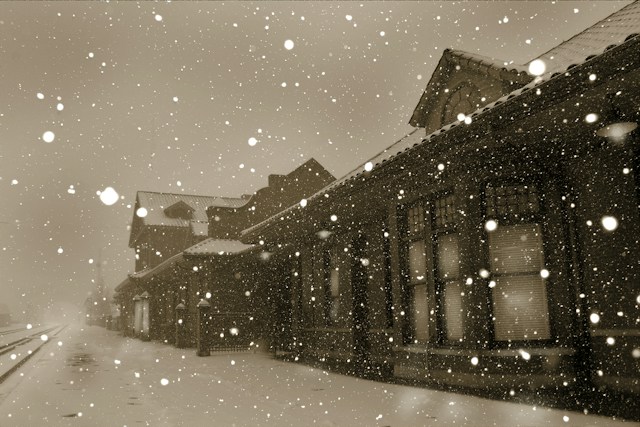Introduction:
California’s winter snowfall is a topic of great significance, especially considering its implications for water resources, agriculture, and the overall ecosystem. One of the major influencers of California’s winter weather patterns is the El Niño phenomenon. In this exploration, we delve into the intricate relationship between El Niño and California’s winter snowfall, understanding the mechanisms at play and the potential outcomes for this vital aspect of the state’s climate.
El Niño Unveiled: Understanding the Phenomenon:
Oceanic and Atmospheric Interplay: El Niño is a climate phenomenon characterized by the periodic warming of sea surface temperatures in the central and eastern equatorial Pacific Ocean. This warming alters atmospheric circulation patterns, influencing weather conditions across the globe.
Typical Effects: El Niño events are associated with a range of climatic effects, including altered precipitation patterns, changes in sea level pressure, and shifts in atmospheric circulation. These effects have far-reaching consequences for regional climates, making El Niño a significant player in the meteorological theater.

The Pacific Decadal Oscillation (PDO): A Partner in Crime:
Long-Term Climate Patterns: The Pacific Decadal Oscillation (PDO) is another influential climate pattern in the Pacific Ocean, characterized by long-term shifts in sea surface temperatures. The PDO has distinct phases, alternating between warm (positive) and cool (negative) phases over periods of several decades.
Interaction with El Niño: The PDO and El Niño are interconnected. While El Niño represents a shorter-term warming of Pacific waters, the PDO reflects more prolonged phases of warming or cooling. The combined influence of El Niño and the PDO can amplify or mitigate the effects of each other on California’s climate.
California’s Winter Snowfall: The Delicate Balance:
Sierra Nevada Mountains: California’s winter snowfall is particularly crucial for its water supply. The Sierra Nevada Mountains, with their extensive snowpack, serve as a natural reservoir, gradually releasing water throughout the spring and summer. This process is vital for agricultural needs, water reservoir replenishment, and overall ecosystem health.

Snow Water Equivalent (SWE): The amount of water stored in the snowpack, often measured as Snow Water Equivalent (SWE), directly impacts California’s water availability. A healthy snowpack contributes to water reserves, while insufficient snowfall can lead to drought conditions and water scarcity.
El Niño’s Influence on California’s Winter Snowfall:
Warmer and Drier Conditions: During El Niño events, California tends to experience warmer and drier conditions. The altered atmospheric circulation patterns associated with El Niño often result in a shift in the storm track, diverting moisture away from the state.
Reduced Snowfall Potential: The warmer temperatures during El Niño can elevate snow levels, causing precipitation to fall as rain rather than snow at lower elevations. This phenomenon reduces the snowpack in critical regions, impacting the water content stored in the mountains.

Southern Storm Track Dominance: El Niño tends to favor a more southern storm track, bringing increased precipitation to Southern California but potentially leaving the northern regions with below-average snowfall. This geographical variability further complicates the overall impact on the state’s snowpack.
PDO’s Role in Modulating El Niño Effects:
Interplay of Warm Phases: When the PDO is in a warm (positive) phase, it tends to reinforce the effects of El Niño on California’s climate. The combination of a warm PDO and El Niño can intensify the tendency toward drier conditions and reduced snowfall.
Cool Phase Mitigation: Conversely, during a cool (negative) phase of the PDO, the influence of El Niño on California’s winter weather may be mitigated. The PDO in a cool phase can enhance the likelihood of a more normal or even wetter winter, countering some of the drying tendencies associated with El Niño.
Historical Perspectives: Learning from the Past:
El Niño and Drought Connection: Historical data reveals a correlation between El Niño events and drought conditions in California. While not all El Niño events lead to drought, the increased likelihood of drier conditions during these phases highlights the importance of understanding this phenomenon for water resource planning.

PDO’s Long-Term Impact: Examining extended periods of the PDO’s warm or cool phases provides insights into the state’s vulnerability to droughts and water shortages. Recognizing the long-term patterns helps in anticipating and preparing for potential challenges in water availability.
Adaptation and Resilience: Navigating Uncertain Waters:
Water Management Strategies: Given the variability in California’s winter snowfall influenced by El Niño and the PDO, water management strategies become crucial. This includes the implementation of efficient irrigation practices, water conservation measures, and investments in infrastructure for water storage and distribution.
Diversification of Water Sources: Diversifying water sources through the incorporation of alternative water supplies, such as recycled water and desalination, can enhance resilience in the face of climatic uncertainties. These measures contribute to a more robust and adaptable water supply system.
Community Awareness and Preparedness: Building awareness at the community level about water conservation, sustainable practices, and the potential impacts of climate patterns like El Niño fosters a proactive approach. Preparedness and education are key components in navigating the challenges presented by variable winter snowfall.

The Climate Change Factor: Shaping Future Scenarios:
Long-Term Trends: The influence of climate change on California’s winter snowfall further complicates the scenario. Rising temperatures contribute to a shift in precipitation patterns, potentially leading to more rain than snow in certain regions and impacting the traditional snowpack dynamics.
Adapting to Changing Norms: As the climate continues to evolve, adapting to changing norms becomes imperative. Incorporating climate-resilient strategies, sustainable land use planning, and advancements in water management technologies are crucial for navigating the uncertainties presented by a changing climate.
Collaboration and Research: Enhancing Predictive Capabilities:
Meteorological Advances: Continued advancements in meteorological research and predictive capabilities are instrumental in enhancing our understanding of complex climate patterns. Accurate forecasts, especially concerning El Niño events, empower communities and authorities to implement timely and effective measures.
International Collaboration: El Niño is a global phenomenon with widespread impacts. International collaboration in research and data sharing enables a more comprehensive understanding of its dynamics and assists in developing strategies for mitigating its effects on vulnerable regions.

Conclusion: Navigating the Future of California’s Winter Snowfall:
Dynamic and Evolving Landscape: California’s winter snowfall is undeniably influenced by a dynamic interplay of climate phenomena, with El Niño standing out as a key player. Understanding the intricacies of this relationship, coupled with awareness of the PDO’s long-term impact, positions communities to navigate the uncertainties of winter precipitation.
Balancing Resilience and Adaptability: In a changing climate landscape, balancing resilience and adaptability is essential. By implementing sustainable water management practices, diversifying water sources, and fostering community awareness, California can enhance its ability to weather the variability in winter snowfall patterns.
Ongoing Research and Preparedness: Ongoing research, predictive technologies, and international collaboration contribute to a more informed and prepared approach. As we move forward, acknowledging the interconnectedness of climate factors and their potential impacts on California’s winter snowfall is paramount for building a resilient and sustainable future.

